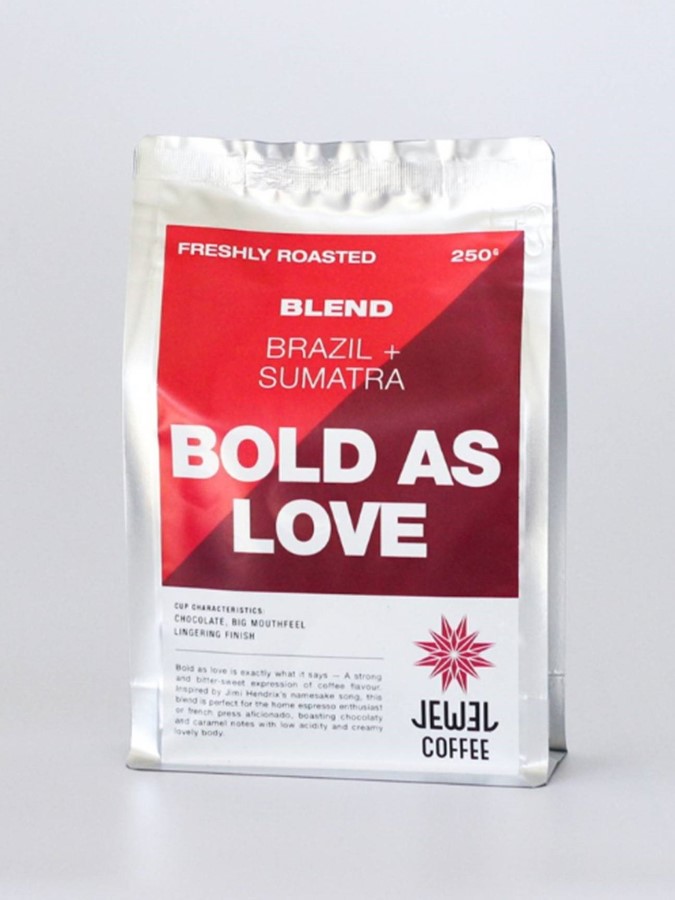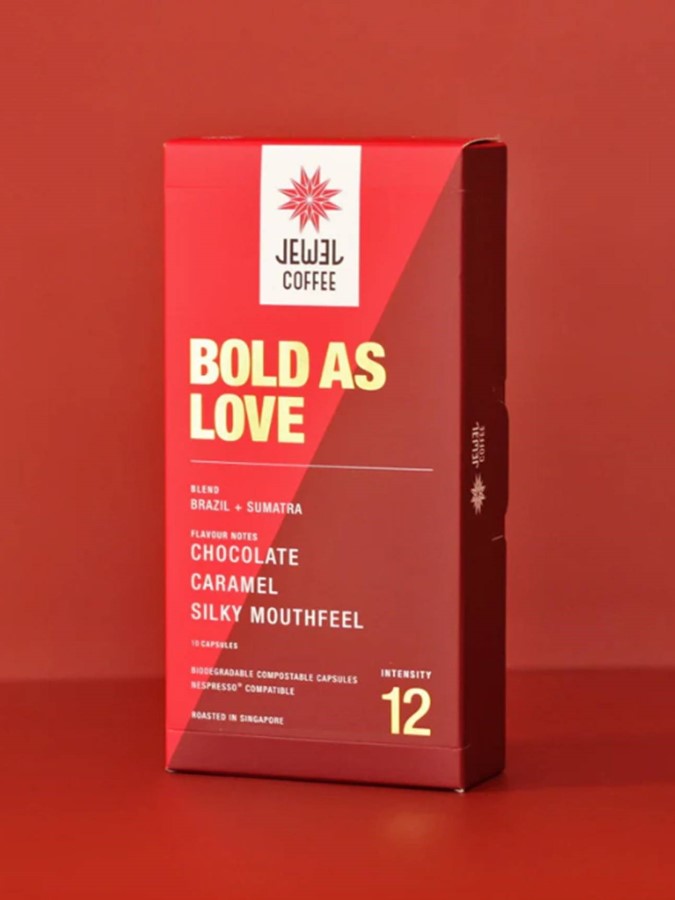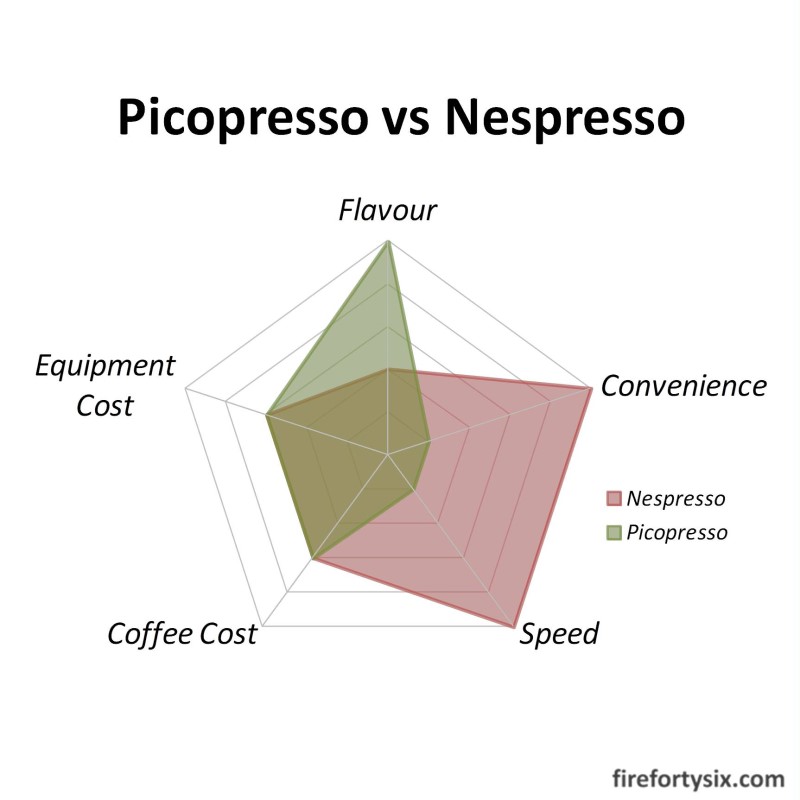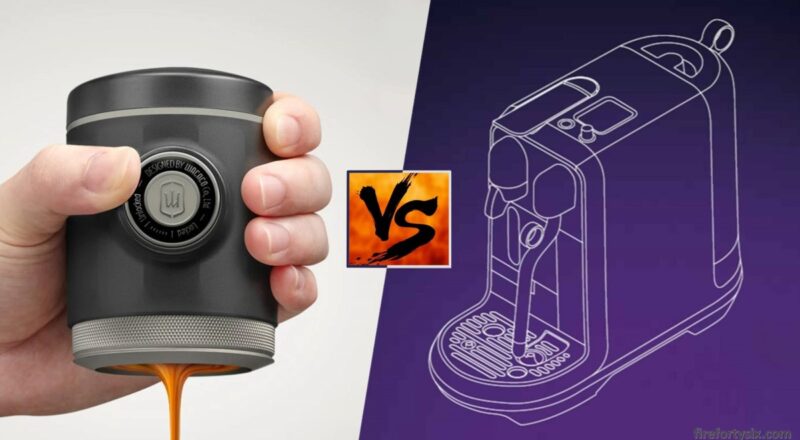It’s been almost two years since I traded in my old Nespresso machine for a new Creatista Plus.
Since then, I’ve been happily making the occasional latte and even tried my hand at making latte art. Which, in case you’re wondering, didn’t quite work out as I had initially expected.
As our daily dose of morning coffee is a hand-brewed V60 pour over, we were quite happy with the lattes from the Nespresso. Especially since it was so fast and so convenient.
Before I decided to get the Creatista Plus, I had briefly considered going down the espresso rabbit hole, but quickly decided that it would be too expensive a hobby to indulge in. But after a steady diet of coffee posts on social media and videos on YouTube, I started wondering if I could do better.
But I really didn’t want to spend several thousand dollars splurging on a proper espresso machine. And then another thousand plus dollars for a good electric grinder. Followed by a few hundred dollars on miscellaneous gear like a bottomless portafilter, WDT tool, knockbox etc etc.
It would all add up, and by the time I was done, I’d be down the price of a kidney. I don’t know about you, but I happen to like the idea of having two kidneys.
That was when I happened across the Wacaco Picopresso, a small hand-operated device that could supposedly brew good espresso. The beauty of it was that it costs less than S$200, even cheaper than some fancy tampers.
After thinking about it for a week, I decided to take the plunge and bought one for myself last December. Right off the bat, I was able to make delicious lattes using anaerobic natural beans from East Nusa Tenggara, Indonesia.
I still had to rely on the Creatista Plus to steam milk, but ever since the Picopresso arrived, I’ve pretty much stopped making espresso using Nespresso capsules.
But before I make a complete transition, I had to run one last comparison between the Picopresso and the Nespresso. By making lattes and Americanos with both machines, and comparing them on flavour, cost and convenience.
And for it to be as apples-to-apples as possible, I had to hold as many of the variables as possible constant. Starting with the most important element: the coffee itself.
Coffee
It’s been a long time since I’ve actually used Nespresso capsules made by Nespresso.
Instead, we’ve been relying on Nespresso-compatible ones made by Jewel Coffee, a local roaster in Singapore. I’ve even done a comparison across all eight of their single-origin and blends, in the form of a single-elimination knockout tournament.
Winning that competition was Bold As Love, a blend of beans from Brazil and Sumatra. Sporting tasting notes of “chocolate, caramel and a silky mouthfeel”, it won over the taste buds of both The Wife and I.
The beauty of buying capsules from a specialty coffee roaster is that they also sell the same coffee in whole bean form, and Jewel Coffee is no exception. Which meant that I could remove the the most important variable from the equation.


For the Nespresso, I used 3 capsules for each drink. Since each capsule contains 5.4g of coffee, the total dosage was 16.2g. Using the standard Ristretto setting, the total amount of espresso extracted was around 54g, for a ratio of 1:3.3.
For the Picopresso, instead of the standard 18g in, 36g out for a ratio of 1:2.0, I maxed out its capacity and aimed to hit 54g out, for a ratio of 1:3.0. It didn’t always manage to stretch it out that far, but I figured it was close enough.
To make the lattes, I steamed 110g of milk per cup, for an espresso-to-milk ratio of 1:2.0. To make the Americanos, I similarly added 110g of hot water for each shot of espresso.
Flavour
The Nespresso latte was nice and balanced, with some discernable floral notes and a mild aftertaste. It was pleasant to drink, although the coffee had to struggle somewhat with the milk to stand out.
It wasn’t something that we had noticed before, when we were exclusively drinking lattes made with the Nespresso. But after several months of using the Picopresso, the difference was stark.
The Picopresso latte was much more robust and flavourful, with a lingering aftertaste and kept going and going. Even though the same coffee beans were used, the Picopresso latte felt more complex and vibrant. Kind of like the difference between steaks made with dry-aged vs fresh beef.
Similarly, the Picopresso Americano had a heavier body but still managed to retain a good balance and made for a more delicious cup. The Nespresso Americano was milder, and in comparison, tasted bland and uninspiring.
On the flavour dimension, the Picopresso won hands-down.
But what about the cost? In terms of both the equipment required, and the variable cost of coffee to make each cup.
Equipment Cost
For a fair comparison, I assembled a hypothetical set of equipment that would be required to make a latte. Team Picopresso would include, obviously, the Picopresso itself plus a decent grinder, such as the 1ZPresso JX-Pro that I happen to already own.
And since the Creatista Plus can’t be playing for both Team Picopresso and Team Nespresso, I would need to replace it with something that could steam micro-foamed milk in an easy and convenient way. I could have gone with the Breville Bambino Plus, but that would have been overkill, since it’s a full-fledged espresso machine with a steam wand.
Instead, I decided to chose the Nanofoamer Pro, which is still running a Kickstarter campaign, but with delivery scheduled for September 2023. There’s always a chance that they eventually won’t ship, but the folks at Subminimal have been in the business for many years now and seem to be reliable.
To make Americanos, the milk steamer is not necessary, and therefore the Nanofoamer Pro won’t come into play. Likewise, the steaming function of the Nespresso Creatista Plus is redundant, and a more appropriate machine would actually be the entry-level Nespresso Essenza Mini.
The table below provides the equipment pricing breakdown. After averaging out the cost for making lattes and Americanos, both teams are essentially tied at around S$500.
| Equipment Cost | Team Picopresso | Team Nespresso |
|---|---|---|
| Latte | Picopresso (S$190) + 1Zpresso JX-Pro (S$220) + Nanofoamer Pro (S$190) = S$600 | Nespresso Creatista Plus = S$850 |
| Americano | Picopresso (S$190) + 1Zpresso JX-Pro (S$220) = S$410 | Nespresso Essenza Mini = S$200 |
| Average | S$505 | S$525 |
Coffee Cost
Jewel Coffee sells its 250g bag of Bold As Love roasted whole beans for S$18.00. Therefore, the Team Picopresso espresso cost for each cup of latte is S$1.30. Add in milk cost of S$0.32 and the total comes up to S$1.62.
Each box of 10 Bold As Love capsules retails for S$6.90, and 3 capsules/cup results in a total cost (including milk) of S$2.39, or almost 50% more expensive.
However, I realised that the cost could be reduced significantly by using 2 capsules per cup, and switching to the default Espresso setting. For some reason, switching to a lower dosage and higher ratio on the Nespresso didn’t change the final taste of the latte much.
This would bring down the per cup cost for Team Nespresso to a more reasonable S$1.70, very close to the cost for Team Picopresso. Strip out the milk cost, and a similar picture emerges when making Americanos.
The table below provides the pricing breakdown, showing that the average cost of each cup for both teams comes in at around the S$1.50 mark.
| Coffee Cost/Cup | Team Picopresso (18g beans) | Team Nespresso (3 capsules) | Team Nespresso (2 capsules) |
|---|---|---|---|
| Latte | (18g/250g) x S$18.00 = S$1.30 + S$0.32 (milk) = S$1.62 | 3 x (S$6.90/10) = S$2.07 + S$0.32 (milk) = S$2.39 | 2 x (S$6.90/10) = S$1.38 + S$0.32 (milk) = S$1.70 |
| Americano | (18g/250g) x S$18.00 = S$1.30 | 3 x (S$6.90/10) = S$2.07 | 2 x (S$6.90/10) = S$1.38 |
| Average | S$1.46 | S$2.23 | S$1.54 |
If you’re curious how I came up with the S$0.32 milk cost, NTUC Fairprice typically sells two 1-litre cartons of Meiji “Red” 4.3 Deluxe (my preferred choice of milk) at S$6.35. That’s enough, post-steaming, for 20 cups of latte i.e. S$0.32 per cup.
As an aside, in the olden times, I used to drag The Wife to go café hopping quite frequently. There were, and still are, many specialty coffee shops in Singapore, serving very good lattes, Americanos, flat whites and pour overs. Several of them have even crossed their 10 year anniversary.
But ever since I started making my own coffee at home, that hobby has died down. Nowadays, the price of a latte in most cafés in Singapore starts from S$5.00. So, you can understand why I haven’t had a latte in a café for a long, long time.
The price differential is even more extreme for pour over coffees, which cost even more in a café, especially when made with good quality single-origin beans. These days, the only thing I buy from them are bags of beans.
Convenience & Speed
So far, Team Picopresso has convincingly trounced Team Nespresso when it comes to flavour, and both teams are tied in terms of fixed equipment and variable coffee costs. But what about convenience and speed?
It’s not even close.
Without giving any more detail, I’m sure you can already guess which team won hands down.
There’s a reason why Nespresso pulls in more than US$7 billion in revenue each year. And it’s not because they make the best coffee.
With an optimised workflow, it still takes my 20 minutes to make two cups of espresso with the Picopresso. Yes, that includes hand grinding the coffee beans with my trusty 1Zpresso, but that step, believe it or not, takes less than a minute.
Brewing espresso on the Nespresso is a simple two-step process. I just have to pop in a capsule and press the Start button. Each shot takes just a few seconds. It doesn’t get any easier or faster than this.
Conclusion
So, putting it all together: the Picopresso does really well in the flavour dimension, while the Nespresso excels in convenience and speed. And both are about even when it comes to equipment and coffee cost.

Given that I value flavour over convenience/speed, and the fact that espresso-based drinks are not our daily source of caffeine, where I land is clear.
I still need to use the Nespresso Creatista Plus to steam my milk for lattes though, so it’s not going back into the storeroom anytime soon. Plus we still have a few boxes of capsules left unopened, which will come in handy when I’m really really lazy.
When the steaming function of the Nespresso conks out, and it inevitably will, I’ll be faced with a tough decision. Do I buy a Nanofoamer Pro to replace it, and stay on the minimalist route? Or do I take one step deeper into the espresso rabbit hole and get an entry-level Breville Bambino Plus?
It’s something to ponder over in the meantime, but that’s something for future me to figure out.
